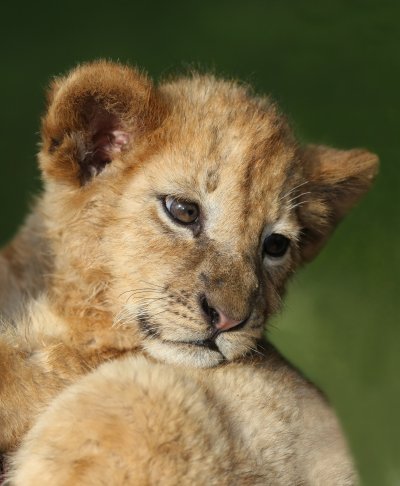|

Whenever trophy hunting or “sport hunting” is discussed in the scientific literature, the subject is generally prefaced by a mention that the issue is “highly divisive”, “polarizing” and “controversial”. Nevertheless, proponents continue to promote “benefits” of trophy hunting, despite their own admissions that much of their “data” in insufficient, lacks appropriate evidence, and is not guided by adequate knowledge of the population numbers of species being hunted, the impact of such offtake, and the genetic consequences of hunting pressure.
The latest in a series of papers comes from `an “Oxford led study” with the goal of attempting to convince Members of Parliament that the proposed UK Hunting Trophies (Import Prohibition) Bill that MPs supported in 2023 could cause more harm than good to the species it was intended to protect. The Bill was basically filibustered in the House of Lords, and another attempt to pass this Bill is being undertaken this year.
The Oxford study’s key findings are:
- that the UK imported less than 1% of the global trade in hunting trophies.
- that the UK consequently only ranked 25th of 183 hunting trophy import nations.
- that 79% of populations of the hunted species were stable, increasing or abundant.
- that “some” were found to be affected by hunting, but that this was “not a threat” to then global conservation status of the species.
- that trophy hunting provided or had the potential to provide significant environmental and social benefits.
The Oxford led study then recommended that options for imports into the UK were to do nothing, trusting that current measures were sufficient to protect species (including robust Non-Detriment Findings provided by the trophy hunting nations themselves) or that a “smart” ban could be adopted. The smart ban would require that imports were be limited to species where hunting contributed “tangibly” to conservation of the species and their habitats, where there was shown to be equitable sharing of hunting revenues with local communities, and where the hunting concession had good governance. (Challender et al 2024)
SO, LET’S ANALYSE THIS:
- Many of the crucial points the authors attempt to make are flawed, data deficient, biased and/or based on hearsay and trophy hunting rhetoric.
- Interestingly, the authors are of the opinion that the Bill could have negative “even devastating” impacts on indigenous people and local communities reliant on trophy hunting.
- This begs the question how the UK, which by the Oxford study’s own assessment, imports less than 1% of global trophies could have such a destructive outcome?
- Also, the Oxford group mentions that while 84% of respondents to a government organised survey were against trophy hunting imports, 68% of the respondents were linked to advocacy group campaigns. Does the Oxford group not fall into this same category?
- They state that many respondents were opposed to trophy hunting because they consider it ethically and morally unacceptable. The Oxford group then goes on to dismiss such concerns because the evidence on which such opinions are based on a lack of “appropriate analytical capability” – similarly prevalent in the Oxford analysis.
- Finally, the Oxford group recently put together a list of signatories for a letter entitled “Trophy hunting bans imperil biodiversity” - of the 128 signatories, 28 (22%) signatories have direct or indirect associations with Oxford’s “wildlife research” programmes. African people who signed only numbered 17 (13%). This clearly shows the inherent bias prevalent among the Oxford group…
Moving on, it is pertinent to consider the variety of reasons given by trophy hunting proponents to continue the practice.
1. Propaganda: “Trophy hunting generates significant revenue that can be reinvested into conservation efforts. The fees paid by hunters often contribute to the protection of wildlife habitats, anti-poaching initiatives, and the management of national parks and reserves. This funding is crucial for maintaining biodiversity and ensuring the survival of endangered species.”
- Such statements are not borne out by actual evidence.
- For example, wildlife populations in Wildlife Management Areas in Zambia are in steep decline. Trophy hunting is permitted in these WMAs.
- An analysis by the Wildlife Producers Association of Zambia estimated that wildlife biomass in WMAs was 247kg/km2 compared to 996 kg/km2 in protected areas.
- GMA residents were 30% poorer than other rural people, trophy hunting funds were misused by local elites – in other words the average GMA resident did not receive adequate benefit flows.
- Also, the total amount of money received by hunting operators was $16,162,417; the wildlife department received $2,469,060; and local communities $1,676,988 per annum (Lindsey et al, 2014). This is sheer exploitation.
- In Botswana, a hunting concession (NG13) was designated as a “poaching hotspot”. A total of 385 elephants were poached in such hotspots (Schlossberg et al.2019).
- In general, hunting operators do not share anywhere near an adequate percentage of their income to claim they contribute to communities.
- In addition, funds for operators are largely raised overseas where trophy hunters are recruited during “conventions”. Such funds are not available to African governments despite hunters exploiting national resources.
- As for protection of wildlife habitats, over 40% of previous hunting concessions in Zambia and over 70% of concessions in Tanzania are now defunct, largely because the operators saw no further financial benefit to tender for such concessions – mainly due to lack of “huntable wildlife”.
- In Tanzania, 110 out of 154 hunting zones have been abandoned because they are no longer profitable for big game/trophy hunting.
- As for anti-poaching, hunting operators spend $0.08 per hectare, while the Kenya Wildlife Service lists the true costs at $14 per hectare (Africa Geographic March 2019).
2. Propaganda: “Trophy hunting can provide substantial economic benefits to local communities. The revenue generated from hunting permits and fees can create jobs, support local businesses, and fund community development projects. This economic incentive encourages communities to protect wildlife rather than exploit it for short-term gains.”
- Community members are usually only employed for six months of the year during the hunting season. Such employment largely consists of unskilled and low-paid jobs like cleaners, cooks, trackers, skinners, etc.
- Funding provided for community development is overstated. For example, trophy hunting has been mentioned as providing funds for the provision of community clinics and schools. There is no evidence of this claim – schools require teachers, books, supplies, and clinics require medications, nurses, beds, etc. And nowhere is there any evidence that such basic necessities are provided by hunting operators.
- There is no evidence that operators change hearts and minds of community members towards wildlife. An in-depth study of elephant damage to crops in the Mashi Conservancy in the Kaprivi area of Namibia estimated a per-household loss of US$ 465 for the estimated 337 households that experience crop depredation and a total community loss of US$ 157,000 due to elephants.
- The value of crops lost in Mashi exceeded the value gained by the conservancy from hunting elephants by US$ 111,000. Compensation payments were dispersed by the conservancy committee at a fixed rate of US$ 73.0 per hectare, much less than the estimated US$ 545 that could be generated from the yield of a hectare of maize.
- The study warned that with high costs from wildlife, hostility toward wildlife may arise, paving the way for retaliatory actions (Drake et al, Conservation Science and Practice, 2020).
3. Propaganda: Trophy hunting provides much-needed meat for communities living with wildlife.
Again, there is very little documented evidence that hunting operators actually provide such meat to rural communities.
- Perhaps the most comprehensive study was undertaken in Zambia by White and Belant (PLOS One, 2015). The Zambian government requires that 50-60% of hunted meat is distributed, but there is little evidence this actually occurs.
- White and Belant studied three Game Management Areas and then extrapolated their results to cover ALL 63 GMAs. This method resulted in an annual projected distribution of 129,771 kilos of meat per annum. However, the authors did not provide any estimate of the number of people residing in those GMAs.
- Zambia estimates that about 1.5 million people live in and around GMAs. Even if we take a quarter of this number, that implies 375,000 residents.
- And if we make the assumption that hunted meat is equitably distributed instead of largely benefiting community elites, that would mean each person living in a GMA receives 344 grams of wildlife meat per annum, or 6.6 grams per week.
- As a comparison, it is estimated that the average person in the UK eats 854 grams per week; in the USA average meat consumption is 2,429 grams per week. Clearly, provision of wildlife meat to individual community members via trophy hunting is miniscule and should not be listed as a “benefit”.
Conclusions
Supposed “benefits” of trophy hunting to communities, anti-poaching and wildlife conservation fall apart with any realistic analysis. While these so-called benefits are repeated and touted ad nauseam by trophy hunting supporters, merely repeating claims does not make them factual. Rhetoric falls apart when claims are closely examined.
While the ultimate goal should be to ensure that wildlife thrives while also providing economic opportunities for those who live alongside it, trophy hunting is not the solution.
HOW YOU CAN HELP TODAY:
Please sign our online petition with change.org asking the UK Government to brin in a ban on the importation of lion trophies in the UK. Click here to sign
We have already surpassed 902,000 signatures but we need to get this total to one million by July 1st. We are counting on you to help. Thanks
Please can you DONATE to help us - we rely on donor support to keep the work going. Click here to donate. Thank you.
|




